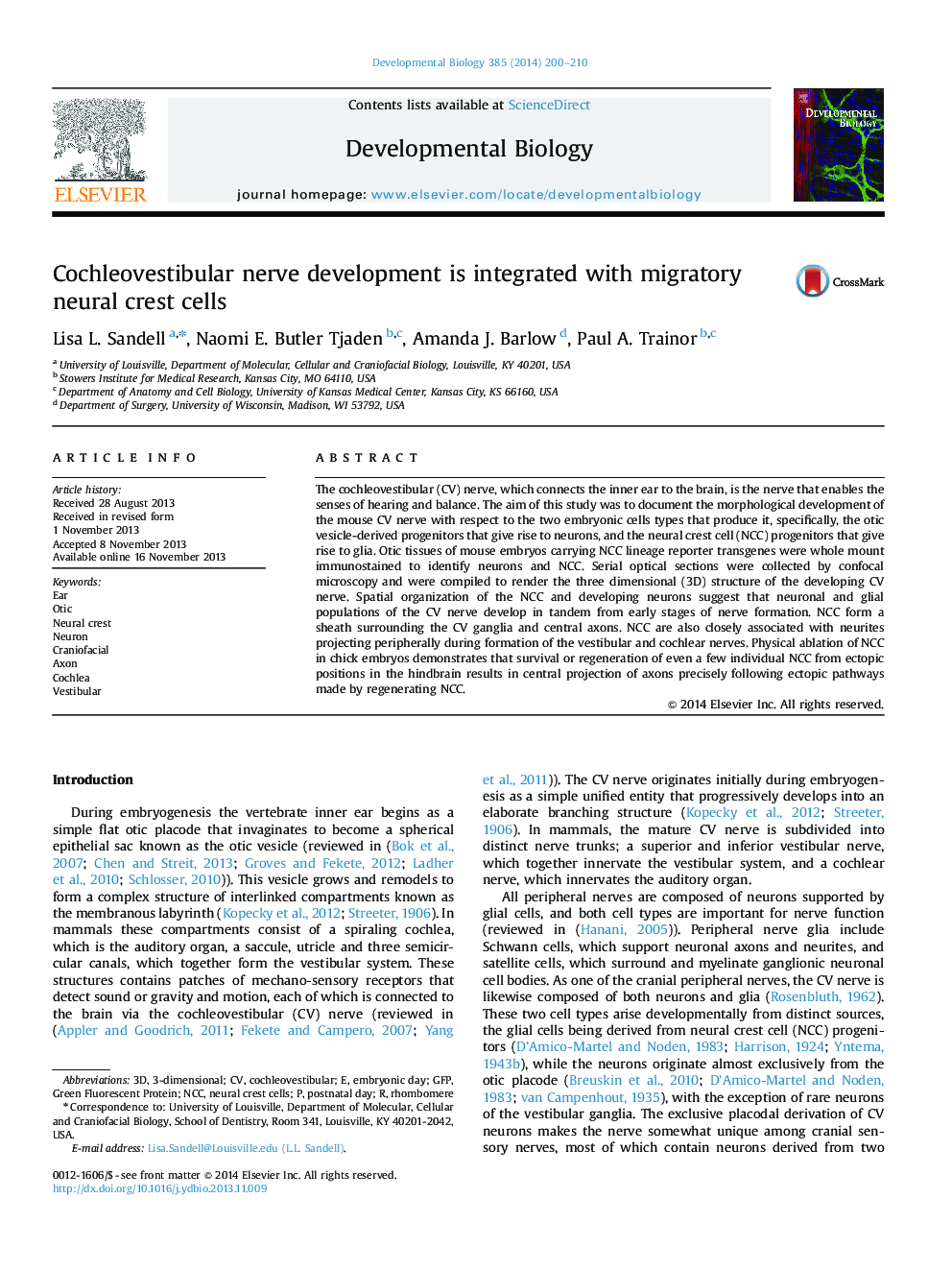| Article ID | Journal | Published Year | Pages | File Type |
|---|---|---|---|---|
| 10931826 | Developmental Biology | 2014 | 11 Pages |
Abstract
The cochleovestibular (CV) nerve, which connects the inner ear to the brain, is the nerve that enables the senses of hearing and balance. The aim of this study was to document the morphological development of the mouse CV nerve with respect to the two embryonic cells types that produce it, specifically, the otic vesicle-derived progenitors that give rise to neurons, and the neural crest cell (NCC) progenitors that give rise to glia. Otic tissues of mouse embryos carrying NCC lineage reporter transgenes were whole mount immunostained to identify neurons and NCC. Serial optical sections were collected by confocal microscopy and were compiled to render the three dimensional (3D) structure of the developing CV nerve. Spatial organization of the NCC and developing neurons suggest that neuronal and glial populations of the CV nerve develop in tandem from early stages of nerve formation. NCC form a sheath surrounding the CV ganglia and central axons. NCC are also closely associated with neurites projecting peripherally during formation of the vestibular and cochlear nerves. Physical ablation of NCC in chick embryos demonstrates that survival or regeneration of even a few individual NCC from ectopic positions in the hindbrain results in central projection of axons precisely following ectopic pathways made by regenerating NCC.
Keywords
Related Topics
Life Sciences
Biochemistry, Genetics and Molecular Biology
Cell Biology
Authors
Lisa L. Sandell, Naomi E. Butler Tjaden, Amanda J. Barlow, Paul A. Trainor,
